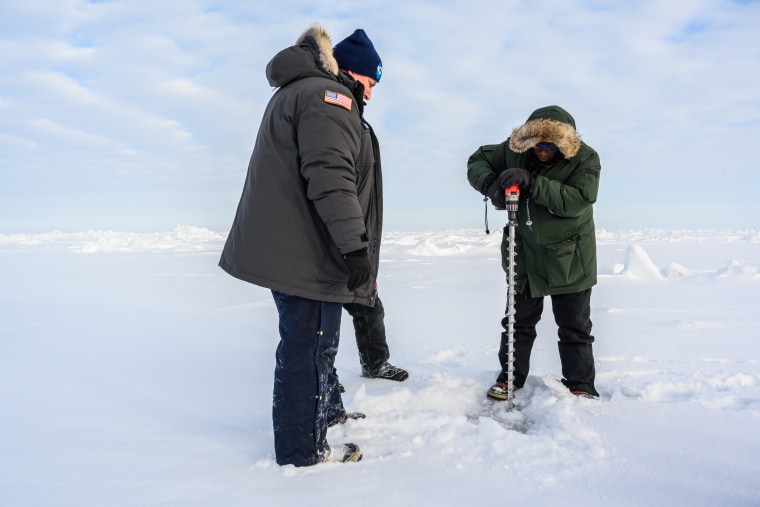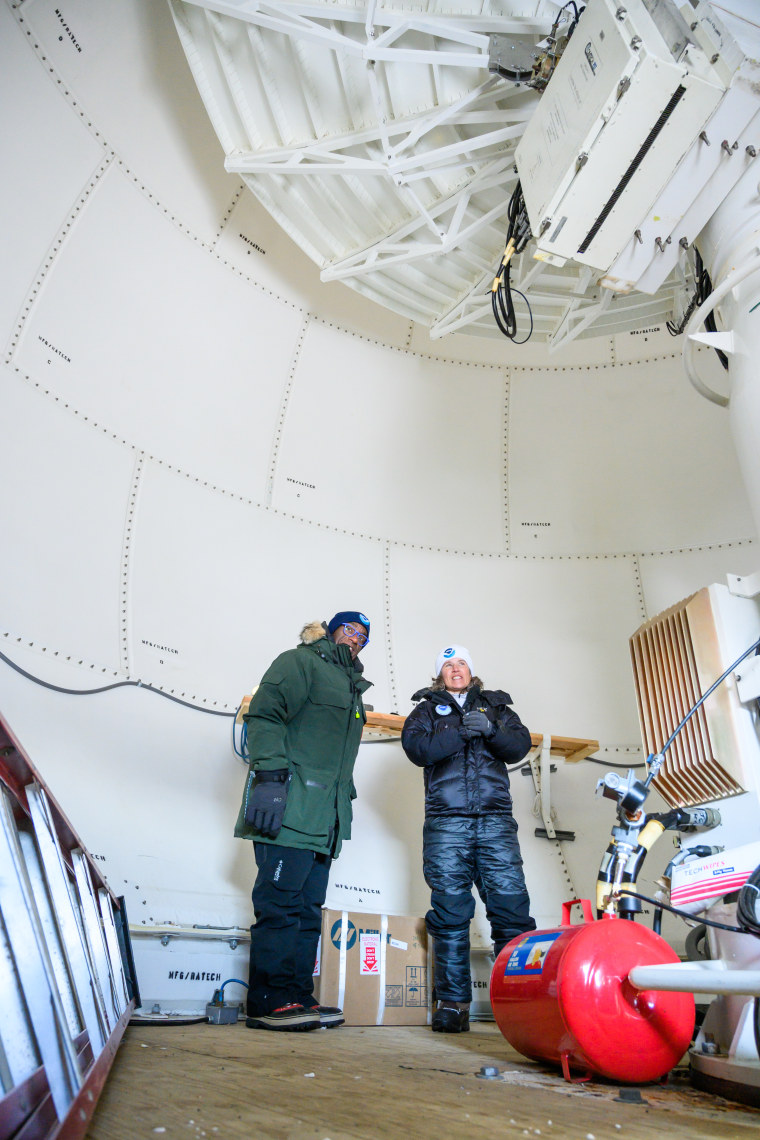What happens in the Arctic doesn’t stay in the Arctic. And scientists studying global warming are trying to learn why.
Al Roker headed to Utqiaġvik, Alaska, considered ground zero for climate change, to learn from the scientists gathering critical information there that could help save the Earth.
Formerly known as Barrow, the community sits at the farthest north tip of the country. When Al arrived on Saturday, March 30, Utqiaġvik hit a record high of 33, which was 36 degrees above average. To put it into perspective, that would be like New York City hitting 91 or Miami reaching 117 on the same spring day.
The unprecedented rise of temperatures has raised a red flag for scientists studying climate change, so Al headed out onto the ice to see firsthand the technology being used to gather data. First up was a weather station that measures air pressure and temperature, as well as wind and sea level pressure, the fundamental parameters needed to forecast weather and study climate change.
“What we are seeing now is unprecedented. Changes that are happening are happening in just 30, 50 years,” Ignatius Rigor, a scientist from the University of Washington, said.

The information collected at the station is “absolutely critical,” Amy Holman, a scientist with NOAA, the National Oceanic and Atmospheric Administration, said.
“We don’t have many weather stations in the Arctic, so it itself gives us information, and in combination with other satellites, it helps make our weather forecasting better,” she said.
“Weather models are so important up here, not only for knowing what it’s going to be like for how we could dress today, but also because we use forecast for aviation, for marine transportation. And that’s critical in Alaska, because so many communities aren’t on roads.”

Holman said scientists are trying to measure all the elements of climate changes and understand why they’re happening so rapidly.
Nearby, Al headed to watch Victoria Hill, an Old Dominion University, scientists deploy buoys to measure how sunlight and heat impact the ice.
Because of its unique location, NOAA’s Barrow Observatory is only one of four worldwide sites taking critical greenhouse gas measurements.
“What’s happening with the greenhouse gases, as you may know, is that they're causing more heat to be absorbed in the atmosphere. The more greenhouse gases there are in the atmosphere, the more heat there is available for things like storms,” Bryan Thomas, the observatory’s station chief who helps a team monitor the ozone and make sure it’s not decreasing, said.
“The ozone hole is something that happens only in the Southern Hemisphere now, and what we are trying to do is understand how it does vary over the Earth and if it’s going to happen, we want to watch it happen and we want to be able to give people warning,” he said.
The ultimate hope is to use the information being gathered to figure out ways to reverse the damage already done.
On Tuesday, Al will report about the impact global warming has had on the folks who live in Alaska and changed their way of living.
“This is not a theory, this is reality here,” Al told his TODAY colleagues about the residents, most of whom are native Alaskans and could ultimately be forced to move from their villages.
“These folks here could be the first refugees due to climate change because of beach erosion, because of land erosion and because of storm surge,” he said.
This story was originally published on April 1.
